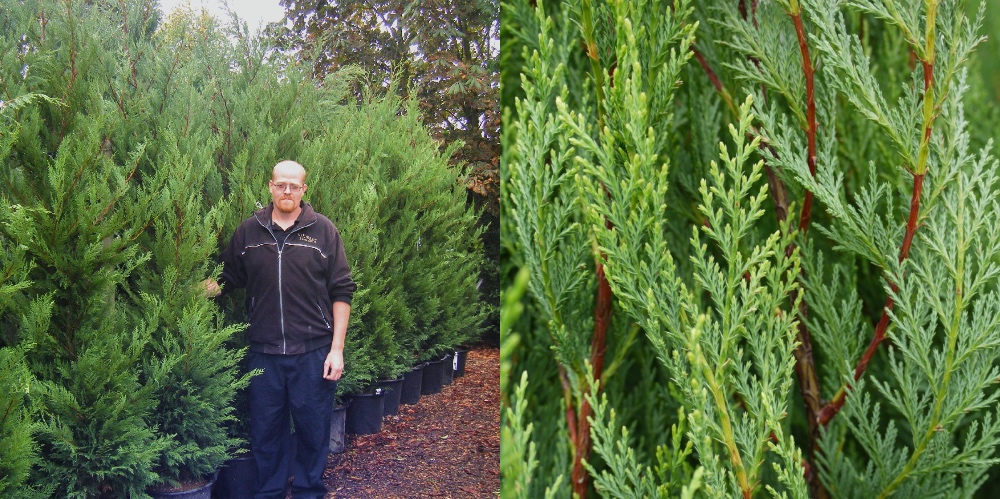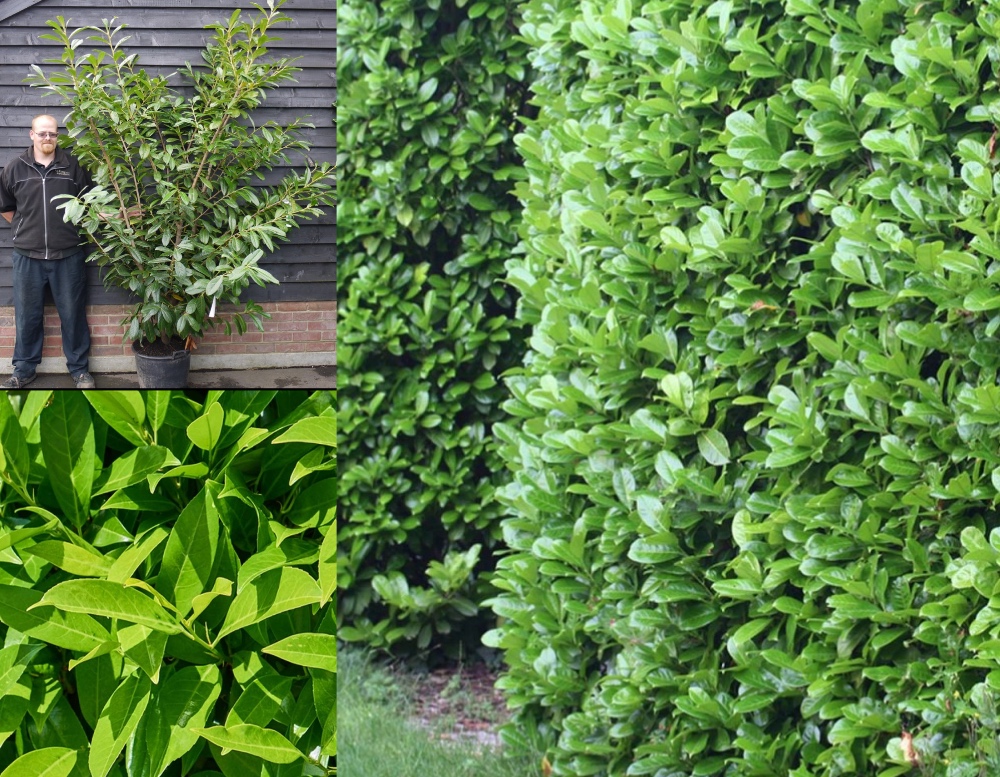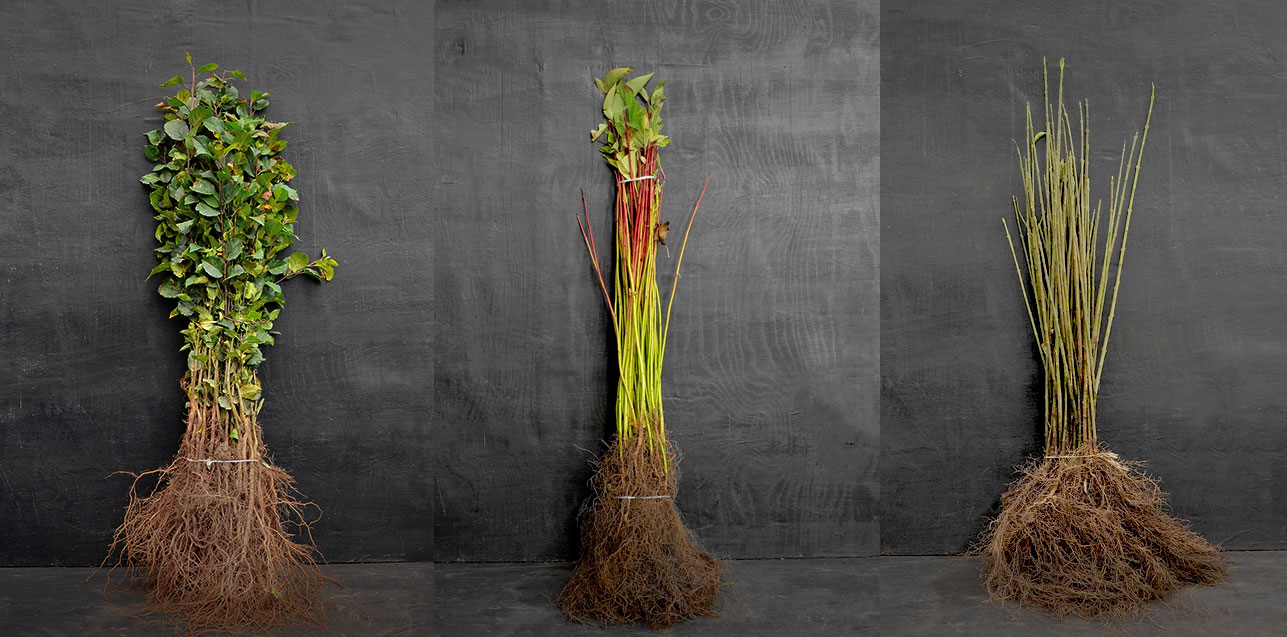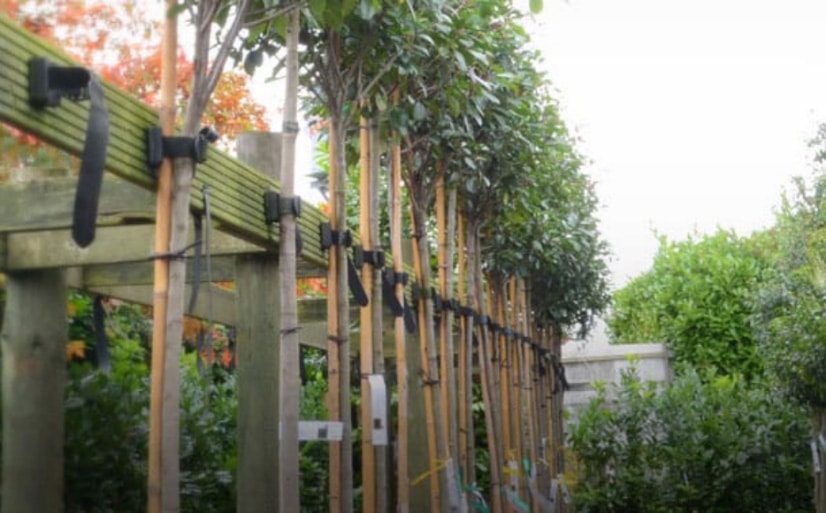King and Co The Tree Nursery’s top ten evergreen hedges. There is wide variety of evergreen hedging plants available to the UK market, we look at the hedge plants in further detail.
When considering which plant to use for evergreen hedges, a number of factors need to be considered. Mostly, evergreen hedge plants are easy to establish, provide an attractive all year round screen and can be planted at all sorts of heights.
Holly Hedge Plants
There are a number of different hollies suitable for hedging. The native holly (ilex aquifolium) is very popular with its glossy, sharp, spiky leaves and dependant on whether you have male or female plants, you will get a great display of red berries. Berries are an important food source for the bird population and hedge cuttings can be handy for Christmas decorations. The big advantage holly has over others is its shade-loving properties. It will thrive where others require full sun and remain valuable in any planting scheme. However, holly is relatively slow growing and is often discounted for that reason. Here is our comprehensive guide to Holly trees.

Thuja
Western red cedar comes in several varieties and is valuable as a slower growing conifer hedge. Less well known than other conifer hedges, Thuja will survive on clay soils and can provide a completely compact hedge when regularly trimmed. Also provides a valuable habitat for nesting birds. Thuja hedge plants can also add winter interest to gardens, with some varieties turning partially bronze in the Autumn.
Portuguese Laurel Hedging
Has a much smaller bluish leaf than English laurel and has a slower growth rate. However, there are few hedges that can match the majestic sight of a mature Portuguese laurel. Also valued as a very compact hedge which can be located in tighter situations. New purple shoots paired with white flowers in the Spring add a premium quality. Prunus lusitanica does not require a great deal of maintenance once established although slightly more expensive than others. Click here to view our range of Portuguese laurel hedge plants.
Leylandii
Despite its bad press, Leylandii remains one of the top sellers in the UK, primarily for its rapid growth rate and instant screening. Stories of monster size structures only surface where a lack of maintenance is apparent. Kept trimmed twice yearly leylandii will not provide any issues. Another hedge that is often overlooked for its nesting habitat and due to mass production is very reasonably priced. Leylandii easily reaches its mature height of around 12 metres with correct care. Click here to view our range of Leylandii hedging available at our Tree Nursery based in Essex.

Privet Hedge Plants
There are a couple of different privet (Ligustrum) which are often used as a boundary hedge. They have the advantage of being available as bareroot hedge plants making them very much cheaper than rootballed or containerised specimens. Planted in a double row privet will thicken nicely into a solid evergreen boundary. Ligustrum japonica has shiny green, smallish ovate leaves which are complimented with white flowers in the Spring.

Laurel Hedges
Although English laurel is not always chosen for an evergreen hedge, it is one of very few that ticks all the boxes. Its one of the most economic methods of creating an instant screen and is available up to 3m in height. It is quite a fast grower, and can be clipped hard with a hedge cutter twice a year. It’s quite at home in many different environments including rural and urban property and is easy to establish. King and Co favour the ‘Novita’ laurel variety given is higher tolerance to disease and colder weather than the traditional ‘Rotundifolia’. Laurel is also grown into evergreen screening trees due to its dense foliage. After watering regularly throughout the first growing season, it will then usually look after itself. Our laurel stock can be viewed here.
Yew
Will make a fabulous evergreen hedge and thrive in most well drained soils. Yew is seen as a traditional English plant that is most in keeping with older country properties as well as being quite at home in the urban environment. Often supplied rootballed, straight from the field at sizes up to 2m. King and Co also supply more reliable container grown Taxus plants. However, if you decide to choose Yew for your hedge you should be aware of the potential difficulties that can occur post planting. Yew is very sensitive to over watering. Use a professional for your installation work. Our reasons why Yew should be used when creating a hedge

Euonymus
Choose from a number of different types, green, variegated different combinations. A medium growth habit and reliable plant, euonymus can be installed at closer intervals to establish an evergreen hedge that will require very little maintenance. Euonymus is now one of the leading box (buxus) replacements. Our most popular is Euonymus ‘Jean Hughes’. View our range of Euonymus here.
Viburnum
For a hedge that will not grow above 3m when mature, Viburnum Tinus is a most reliable of plants. When planted at the rate of two plants per linear metre it will soon grow into a solid boundary hedge. White/pink flowers will reward you through the winter months. Dark green glossy leaves and a dense growth habit enable Viburnum Tinus to quickly add form and interest to your garden.
Pyracantha Hedging
A large spiky evergreen plant which is also known as Firethorn. A fast growing hedge that is particularly valuable where deterring intruders is a consideration. Another plant that provides winter interest and berries for the birds. King and Co stock Red, Yellow and Orange Firethorn hedge plants. Pyracantha will grow in almost any soil and will benefit from a twice-yearly trim. Always wear thick gloves when handling pyracantha!
Frequently asked questions:
Holly (ilex aquifolium) is one of the best hedge plants for a shaded area.
Pyracantha champions the defensive hedge category with strong, sharp thorns. Perfect for creating an impenetrable boundary hedge.
King and Co offer several box hedge alternatives, for similar growth rate and form factor we would recommend Euonymus ‘Jean Hughes’ or ‘Greenspire’. Ilex crenata ‘Caroline Upright’ is another perfect buxus alternative.
In ascending success rate order, container grown plants are most likely to survive following planting – they can also be planted at any time during the year. Bare root and rootballed hedging is generally cheaper for this reason.
Evergreen hedge plants that are rootballed must be planted during the season (November to March), whereas container grown plants can be planted any time during the year.





